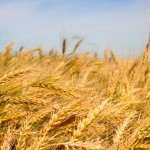Optical sorters, used to remove unwanted material in grain, are constantly improving and becoming more affordable, says Dale Alderson of Intel Seed. Nowadays a sorter can remove nearly 100 per cent of the ergot in a cereal crop, take wild oats out of tame ones and dramatically reduce the percentage of fusarium-damaged kernels in wheat.













